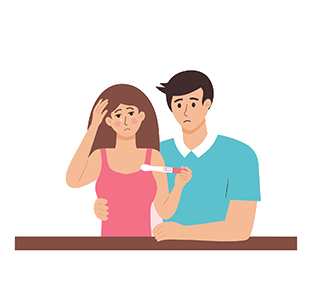As a therapist, a very common concern that I hear from clients is about unwanted, upsetting thoughts that seem to come out of nowhere. “Where did that thought come from?” people wonder. “Does this mean there is something wrong with me?” The anxiety these thoughts create can be overwhelming. Let me reassure you from the start: having intrusive thoughts doesn’t make you a bad person, and you’re far from alone in experiencing them.
What Are Intrusive Thoughts?
Intrusive thoughts are exactly what they sound like—unwanted thoughts, images, or impulses that seem to barge into your consciousness without invitation. These have been defined as “unwelcome repetitive thoughts, images or impulses” that can feel distressing and difficult to control (Rachman, 1981). Think of them as mental pop-ups that show up in your brain—and we all know how annoying pop ups are.
These thoughts are “unwanted thoughts or mental images that make people feel uncomfortable.” They are surprisingly common and affecting millions of people in the US alone. The content can range from everyday worries to more unsettling scenarios involving harm, inappropriate behavior, or taboo subjects. What makes these thoughts particularly bothersome is that they are often in direct opposition to our values and who we are.
The Universal Experience
Here’s something important to understand: intrusive thoughts are “unwanted and repetitive thoughts, images, or urges. We all have them”—yes, all of us. The difference lies in how we respond to them and how frequently they occur. For most people, intrusive thoughts are fleeting and easily dismissed. However, for others, they can become more persistent and stressful.
These “unexpected images or thoughts that seem to pop into your head” are “often strange or distressing.” It is important to remember that almost everyone has intrusive thoughts from time to time, they are not planned or brought about deliberately.
Why Do We Have Them?
From a therapeutic perspective, intrusive thoughts might be understood as a normal function of our brain’s attempt to process information and assess potential threats. Some researchers believe intrusive thoughts are “a type of misinterpreted warning signal, a sort of brain hiccup” rather than meaningful reflections of our desires or character.
Our minds are constantly active, generating thousands of thoughts throughout the day. Most of these thoughts flow through our consciousness without much notice. However, when a thought contains content that contradicts our values or feels threatening, we notice it, our attention gets stuck on it and this can create a cycle of distress and rumination.
When to Seek Help
While intrusive thoughts are normal, they can become problematic when they significantly interfere with daily functioning or cause intense distress. They may be associated with conditions like obsessive-compulsive disorder (OCD), anxiety disorders, or depression. If you find yourself spending hours trying to suppress these thoughts, avoiding certain situations because of them, or feeling overwhelmed by their frequency, it may be time to speak with a therapist.
Moving Forward
Remember that having intrusive thoughts doesn’t define you or predict your behavior. These thoughts “can be effectively managed using tools such as cognitive behavioral therapy.” With proper support and techniques, you can learn to change your relationship with intrusive thoughts, reducing your anxiety about them and their power over your daily life.
The first step in managing intrusive thoughts is understanding that they’re a common human experience, not a reflection of your character or hidden desires. You are not your thoughts, and seeking help is a sign of strength, not weakness.
If you’re struggling with persistent intrusive thoughts that interfere with your daily life, consider reaching out to a licensed therapist who can provide personalized support and evidence-based treatment strategies.
References
Clark, D. A. (2005). Intrusive thoughts in clinical disorders: Theory, research, and treatment. Guilford Press.
Rachman, S. (1981). Part I. Unwanted intrusive cognitions. Advances in Behaviour Research and Therapy, 3(3), 89-99.



